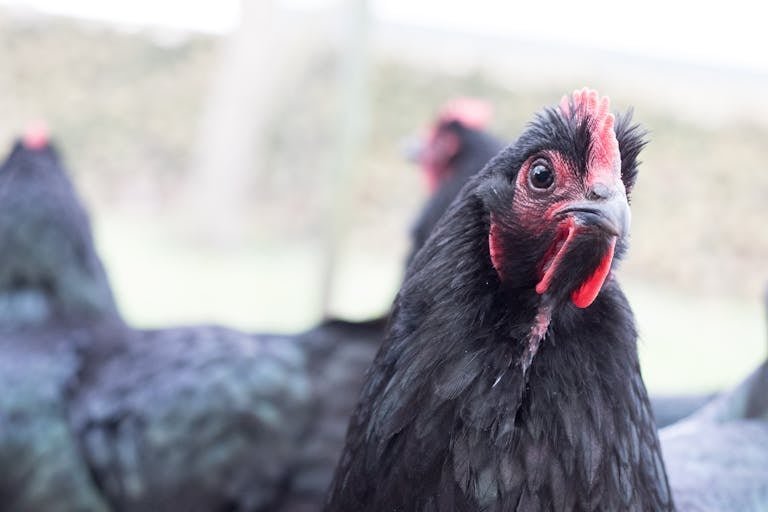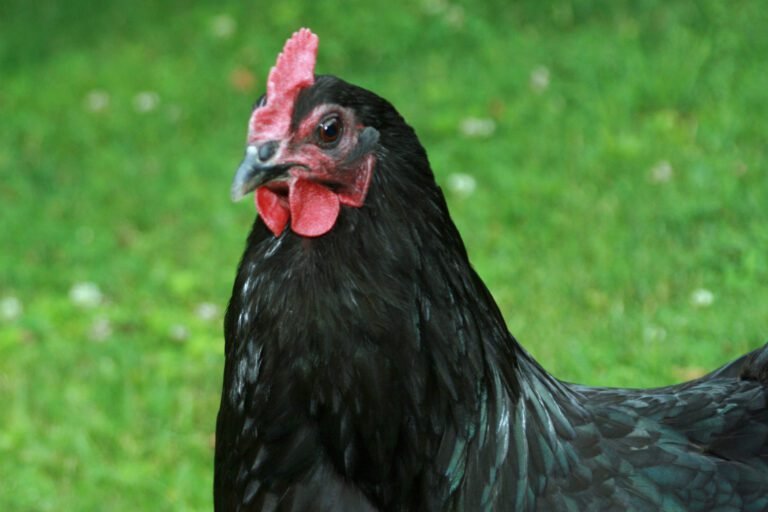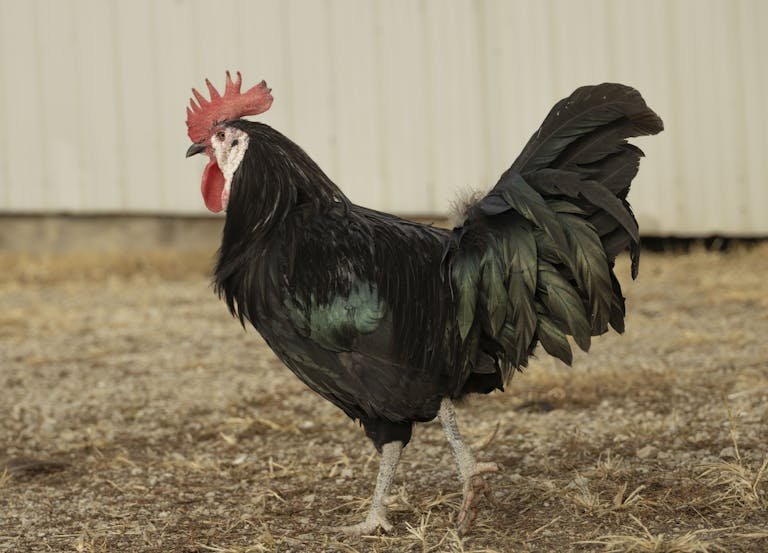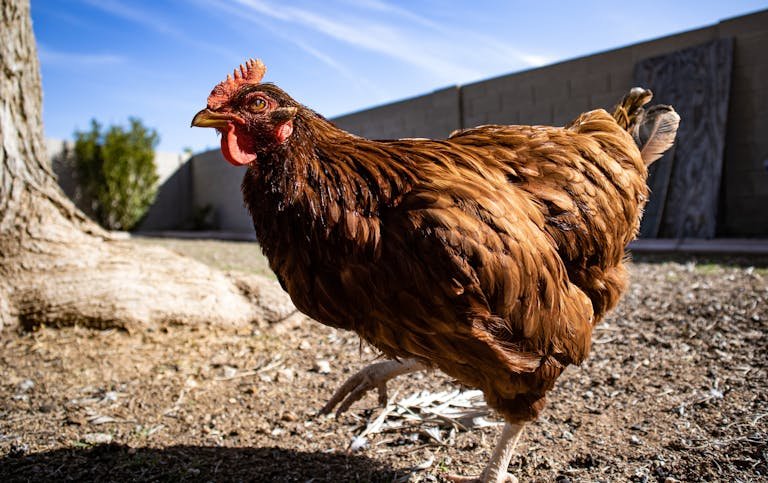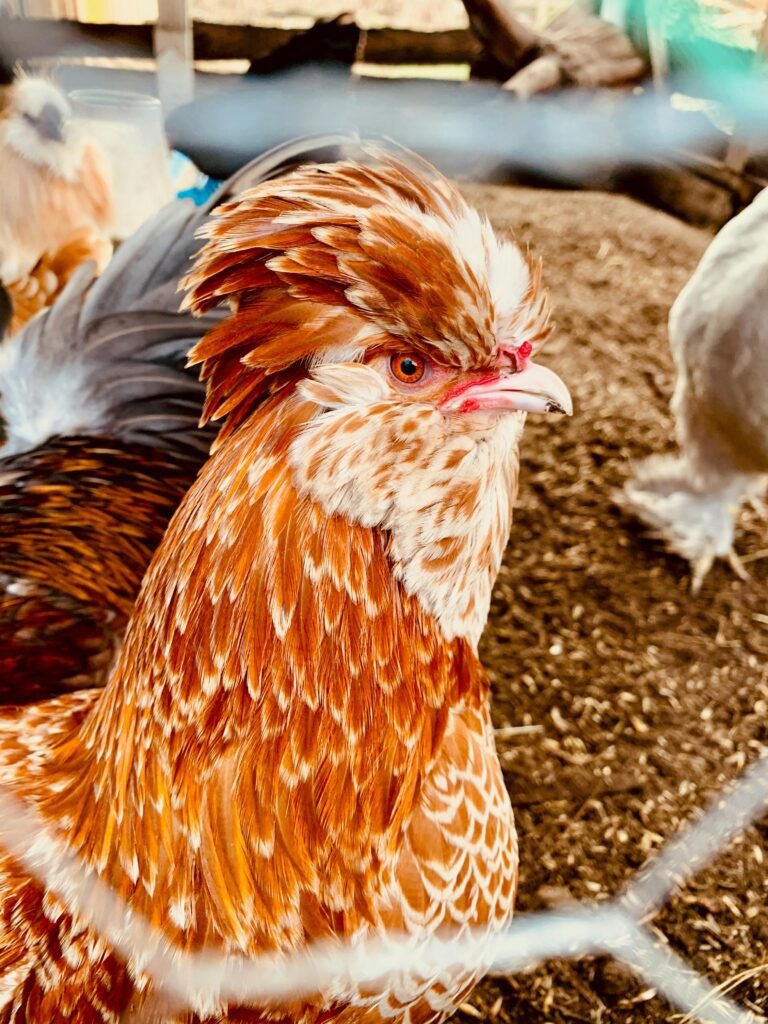10 Stunning Long-Haired Chicken Breeds You’ll Love
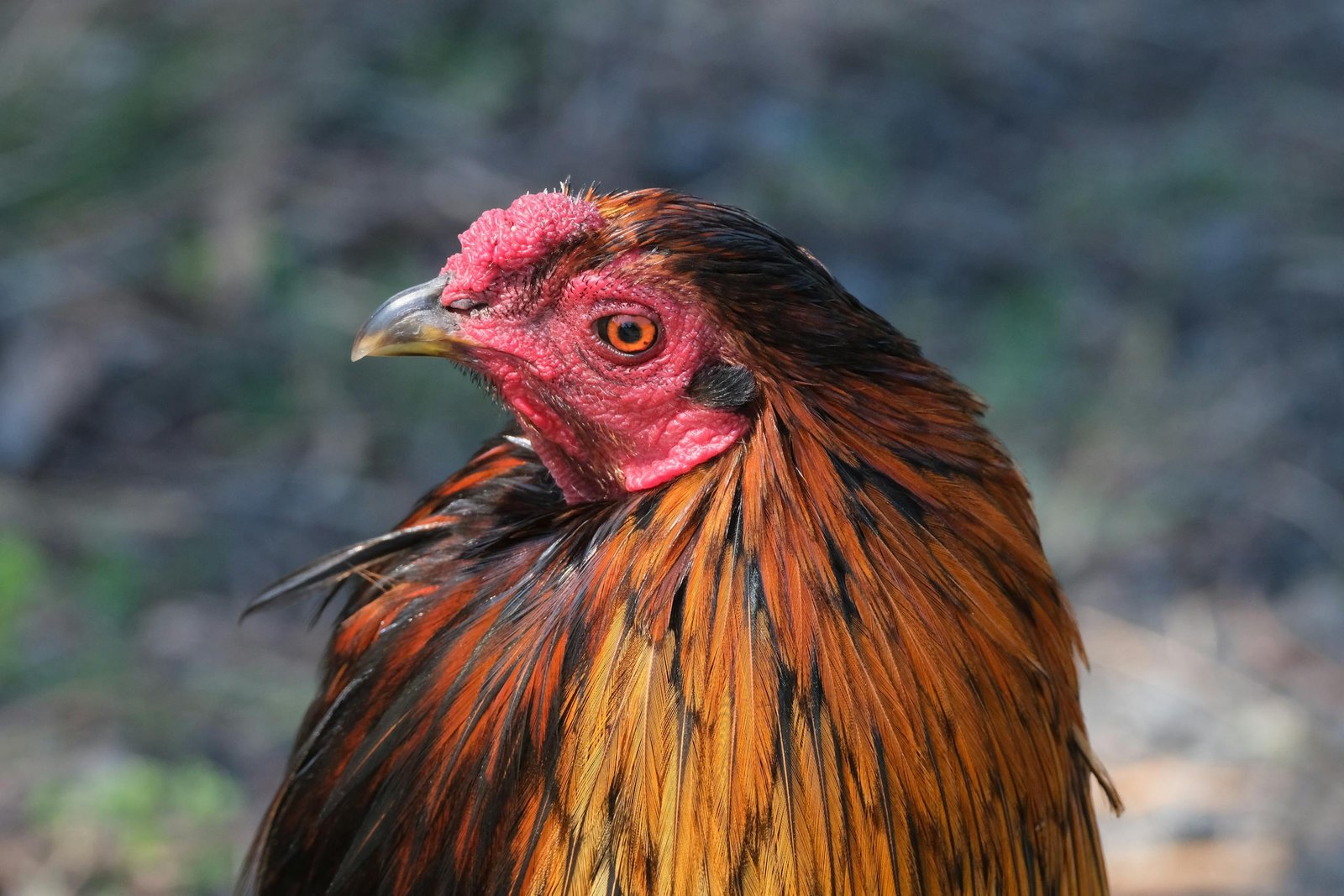
Chickens come in a variety of breeds, each with unique characteristics. Long-haired chicken breeds are particularly fascinating due to their elegant plumage, which sets them apart. This guide explores 10 long-haired chicken breeds, detailing their origins, features, and special traits.
1. Silkie: Overview, Origin, and Features
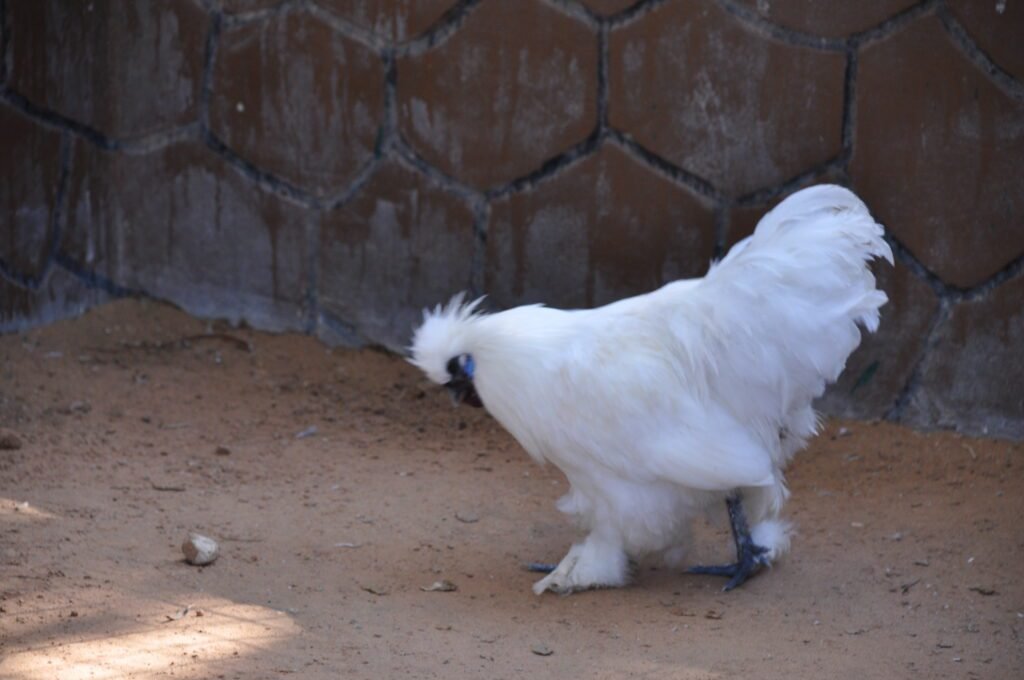
Overview
The Silkie chicken is one of the most popular and distinctive long-haired chicken breeds. Known for its fluffy plumage that feels like silk, this breed is a favorite among poultry enthusiasts and backyard chicken keepers.
Origin
Silkies are believed to have originated in Asia, with historical references tracing back to ancient China and Japan. Marco Polo even mentioned a “furry chicken” during his travels in the 13th century.
Features
- Feathers: Silkie feathers lack barbicels, giving them a fur-like appearance.
- Skin and Bones: Uniquely, Silkies have black skin and bones, a trait called fibromatosis.
- Temperament: Known for their calm and friendly nature, Silkies are excellent pets.
- Egg Production: They lay small, cream-colored eggs but are not prolific layers.
- Broodiness: Silkies are highly broody and make excellent mothers.
Read Also: The Truth About Silkie Hens and Walnuts
2. Polish: Overview, Origin, and Features
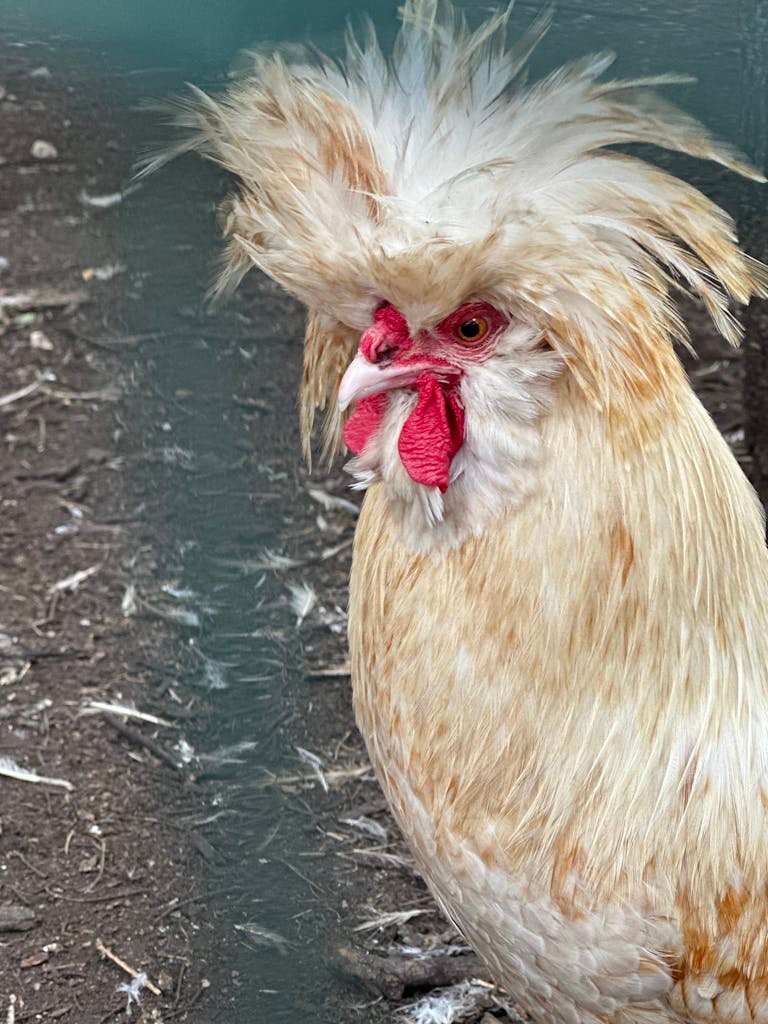
Overview
Polish chickens are easily recognizable by their large crests of feathers, which often obscure their vision. They are ornamental birds prized for their unique appearance and charming personalities.
Origin
The exact origin of Polish chickens is unclear, but they are thought to have originated in the Netherlands and were later developed in Poland.
Features
- Feathers: They have a distinctive crest of feathers on their heads, sometimes called a “top hat.”
- Temperament: Polish chickens are friendly but can be skittish due to their obscured vision.
- Egg Production: They lay white eggs and are moderate layers.
- Varieties: They come in several color varieties, including white, black, and golden.
Tip: Trim feathers around the eyes to improve visibility.
3. Cochin: Overview, Origin, and Features
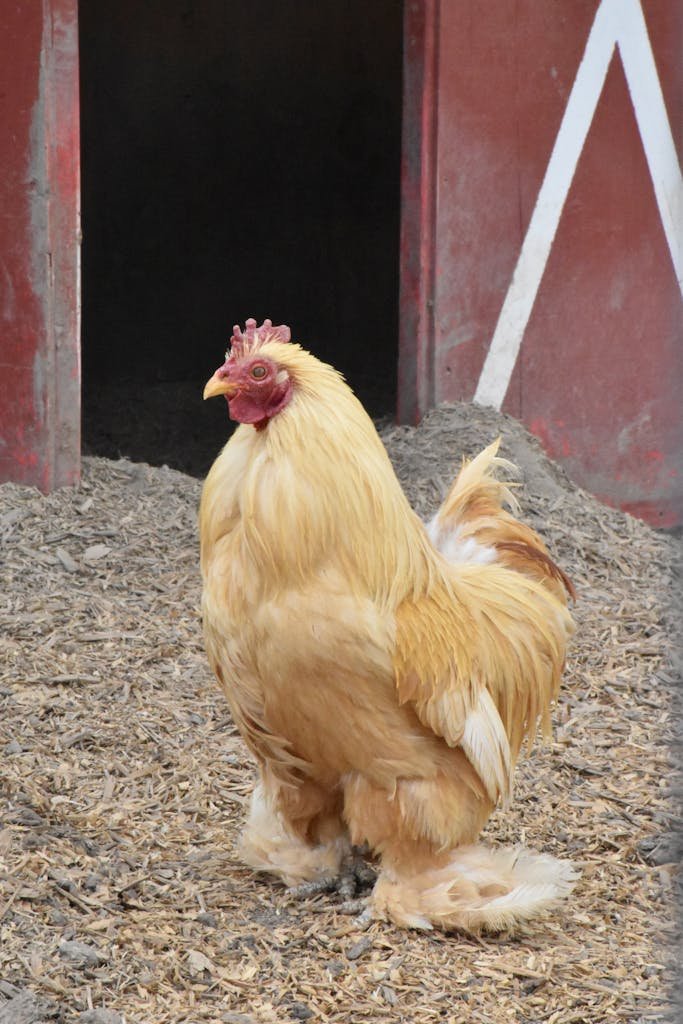
Overview
Cochins are large, fluffy chickens with a gentle disposition. Their abundance of feathers extends down to their legs and feet, making them appear even larger.
Origin
Cochins originated in China and were brought to the West in the mid-19th century.
Features
- Feathers: Cochins have a profusion of soft, dense feathers covering their entire bodies.
- Size: They are one of the largest chicken breeds, with some males weighing up to 11 pounds.
- Temperament: Cochins are known for their docile and friendly nature.
- Egg Production: They are fair layers of brown eggs but are more valued for their ornamental qualities.
- Broodiness: Cochins are excellent mothers and frequently go broody.
4. Faverolles: Overview, Origin, and Features
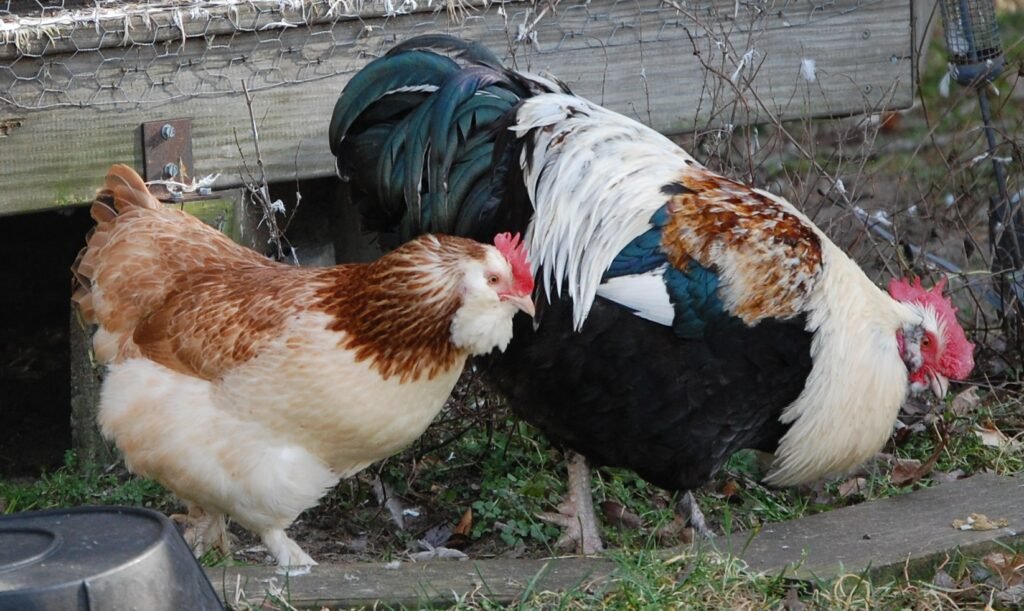
Overview
Faverolles are charming birds known for their unique appearance and friendly demeanor. They are often kept for both their ornamental value and utility.
Origin
The Faverolles breed originated in France in the village of Faverolles. They were developed in the 19th century from a mix of several other breeds.
Features
- Feathers: Faverolles have a distinctive beard and muffs, giving them a fluffy appearance.
- Color Varieties: The most common variety is Salmon, but they also come in White and Black.
- Temperament: They are gentle and friendly, making them great for families.
- Egg Production: They are good layers of light brown eggs.
- Size: They are medium-sized birds, with males weighing around 8 pounds.
5. Sultan: Overview, Origin, and Features
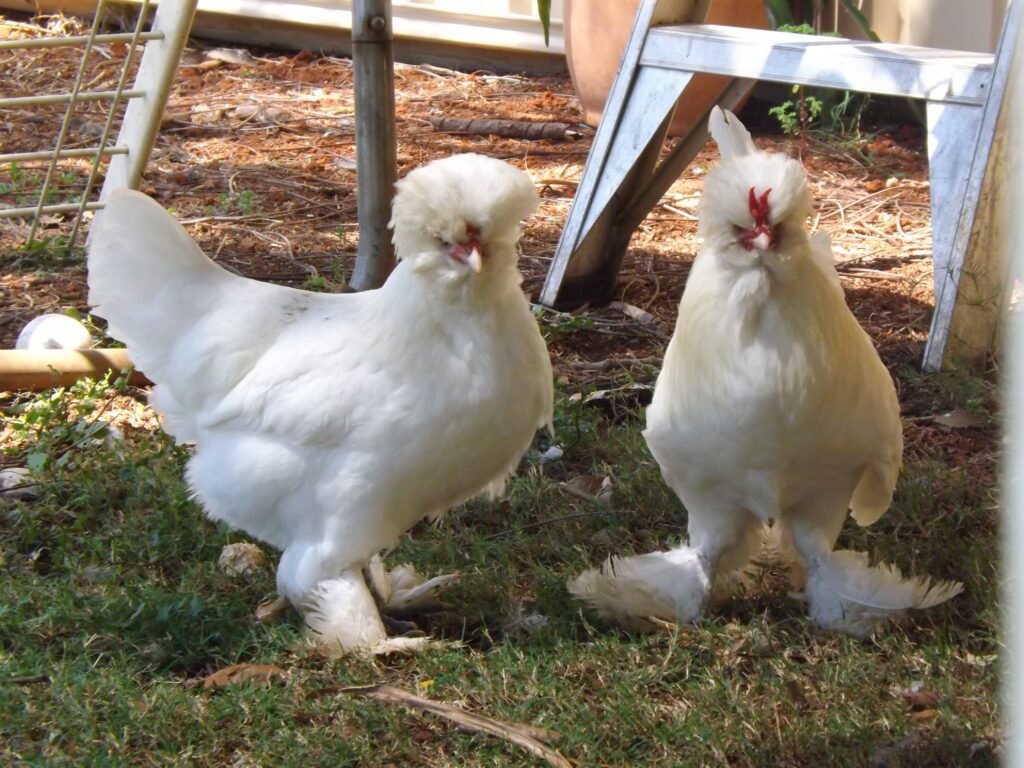
Overview
Sultans are rare and exotic chickens known for their luxurious plumage and regal appearance. They are primarily kept as ornamental birds due to their striking looks.
Origin
Sultans originated in Turkey, where they were kept in the gardens of Ottoman sultans. They were introduced to Europe in the 19th century.
Features
- Feathers: They have a full crest, beard, and vulture hocks, giving them a very fluffy appearance.
- Size: Sultans are small to medium-sized birds.
- Temperament: They are calm and friendly but require more care due to their delicate plumage.
- Egg Production: They are not prolific layers, producing small white eggs.
- Feet: Sultans have five toes on each foot, unlike the typical four in most chicken breeds.
6. Houdan: Overview, Origin, and Features
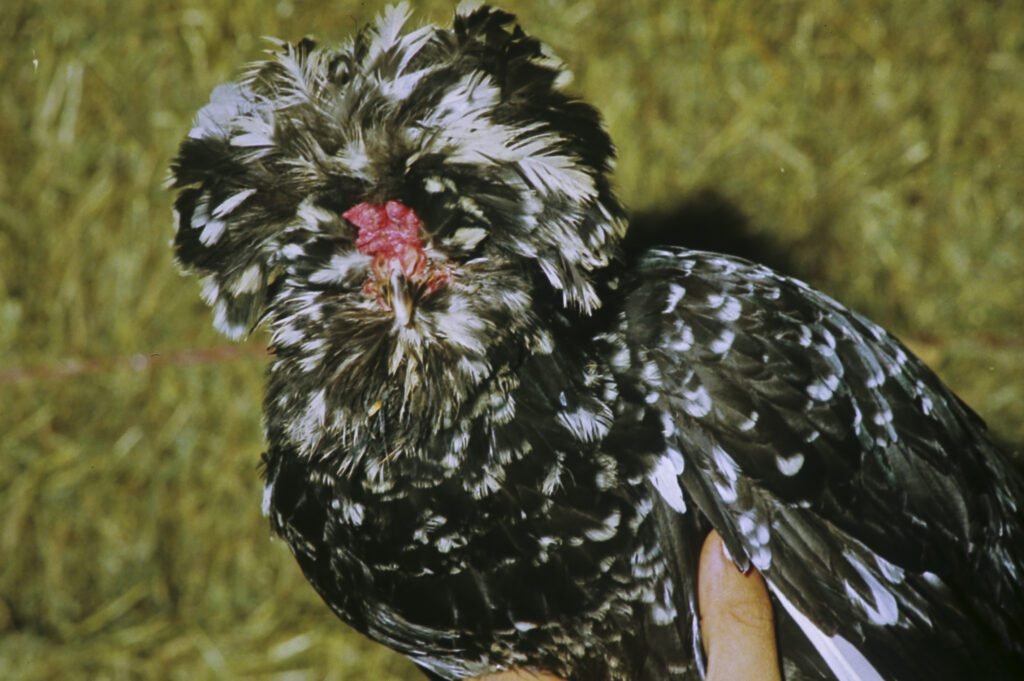
Overview
Houdans are striking chickens with a distinctive V-shaped comb and a full crest of feathers. They are both ornamental and practical, being good layers of eggs.
Origin
Houdans originated in France, specifically in the town of Houdan. They have been known since the 19th century and are thought to be a cross between Crevecoeur and Dorking chickens.
Features
- Feathers: They have a full crest and beard, giving them a fluffy and rounded appearance.
- Temperament: Houdans are friendly and docile, making them great for backyard flocks.
- Egg Production: They are good layers of white eggs.
- Size: They are medium-sized, with males weighing around 7.5 pounds.
7. Crevecoeur: Overview, Origin, and Features
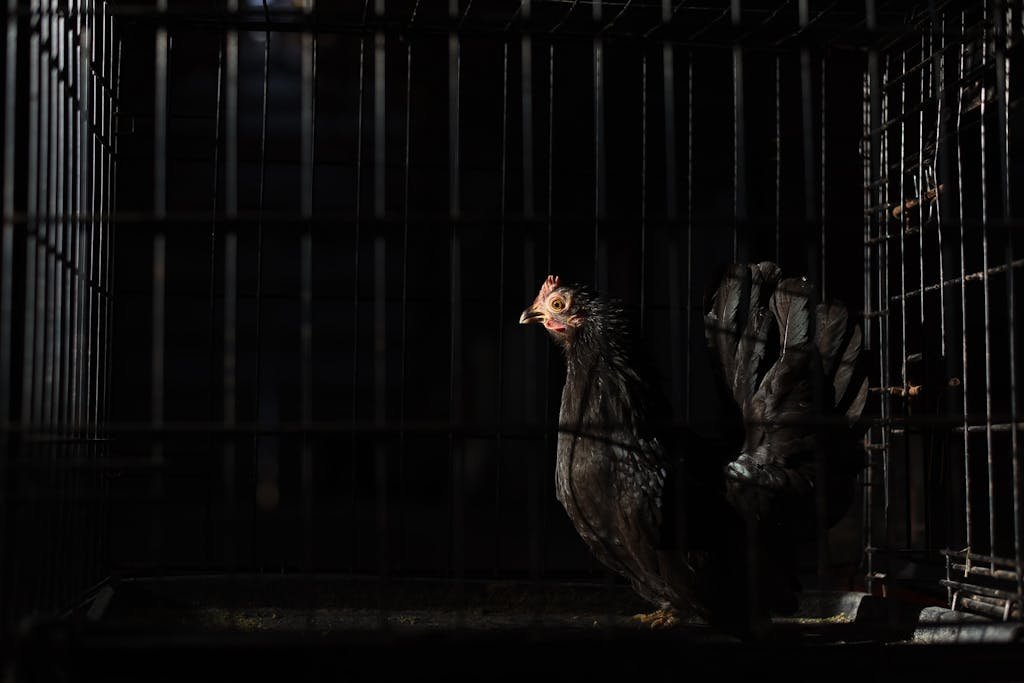
Overview
The Crevecoeur is a rare French breed known for its glossy black plumage and distinctive V-shaped comb. They are prized for their unique appearance and historical significance.
Origin
Crevecoeurs originated in the Normandy region of France and are one of the oldest French chicken breeds.
Features
- Feathers: They have dense plumage with a prominent crest and beard.
- Color: The breed is primarily black.
- Temperament: Crevecoeurs are calm and friendly birds.
- Egg Production: They lay medium-sized white eggs.
- Size: They are medium to large-sized chickens, with males weighing around 8 pounds.
8. Pavlovskaya: Overview, Origin, and Features
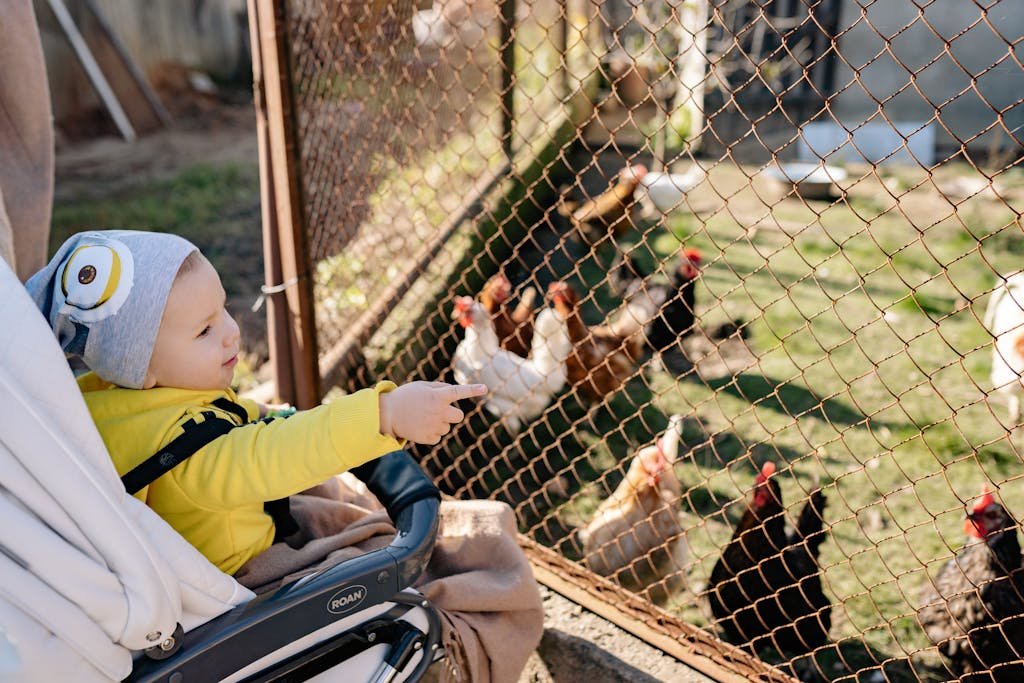
Overview
Pavlovskaya chickens are one of the oldest and rarest Russian breeds. They are known for their striking appearance and hardiness.
Origin
The breed originated in the village of Pavlovo in Russia. They have been known since the 18th century but nearly went extinct before being revived by dedicated breeders.
Features
- Feathers: Pavlovskayas have a unique feather pattern, with a crest and muffs.
- Color Varieties: They come in several color varieties, including gold and silver.
- Temperament: They are hardy and active birds.
- Egg Production: They are decent layers of white eggs.
- Size: They are small to medium-sized chickens.
9. Brabanter: Overview, Origin, and Features
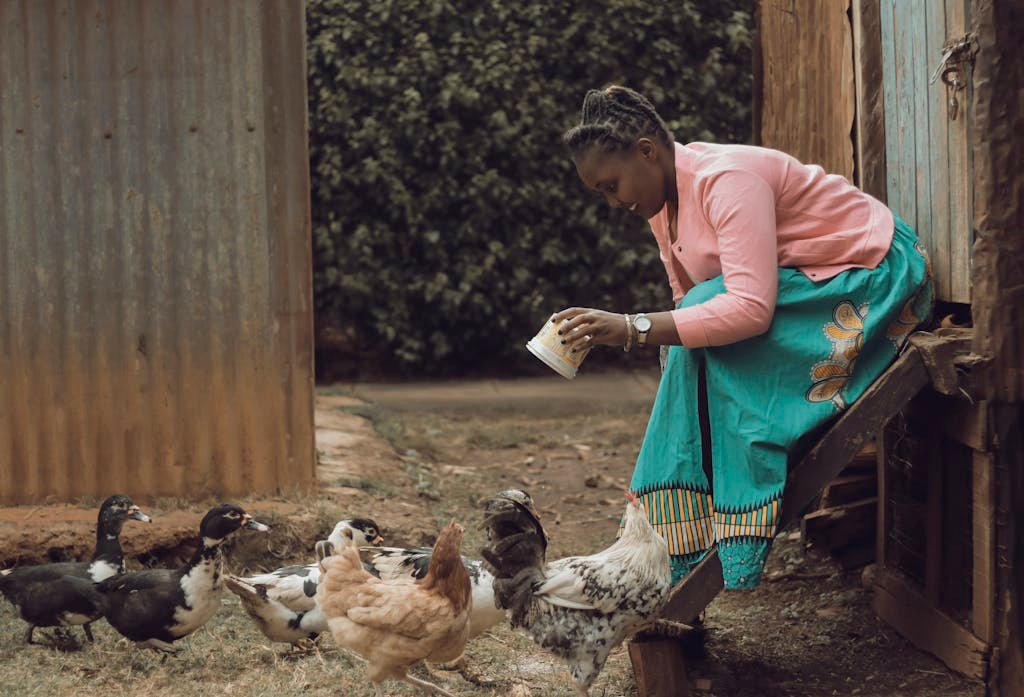
Overview
Brabanters are distinctive birds with a unique appearance, including a V-shaped comb and a forward-facing crest. They are both ornamental and practical.
Origin
The Brabanter breed originated in the Brabant region of the Netherlands and Belgium. They have a long history dating back to the Middle Ages.
Features
- Feathers: They have a prominent crest and beard, giving them a fluffy appearance.
- Color Varieties: Brabanters come in various colors, including gold, silver, and cream.
- Temperament: They are hardy and active birds.
- Egg Production: They are good layers of white eggs.
- Size: They are medium-sized chickens.
10. Appenzeller Spitzhauben: Overview, Origin, and Features
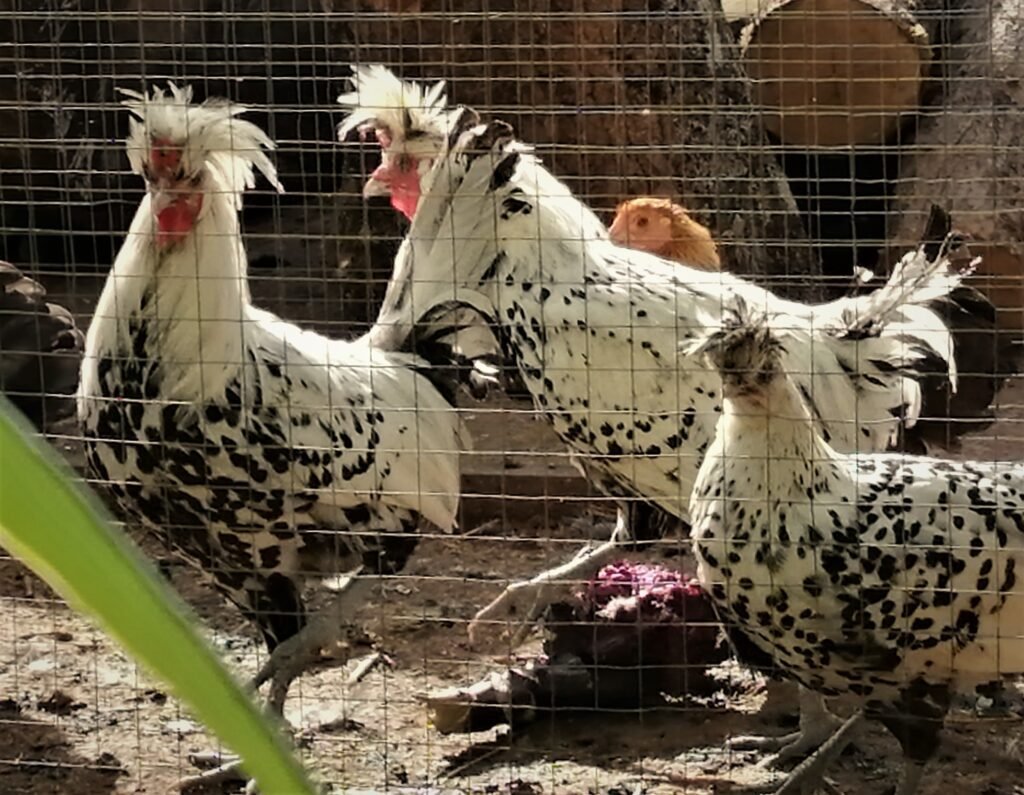
Overview
The Appenzeller Spitzhauben is a unique and rare breed known for its forward-facing crest and energetic personality. They are excellent foragers and adapt well to free-range environments.
Origin
This breed originated in Switzerland, specifically in the Appenzell region. It has been known since the 15th century.
Features
- Feathers: They have a distinctive forward-facing crest and v-shaped comb.
- Color Varieties: They come in several color varieties, including silver-spangled and gold-spangled.
- Temperament: Appenzellers are active and hardy birds, well-suited for free-range living.
- Egg Production: They are good layers of white eggs.
- Size: They are small to medium-sized chickens, with males weighing around 5.5 pounds.
Read Also: Big & Beautiful! Pick Your Perfect Feathered Friend
Comparison Table
| Breed | Origin | Feathers | Temperament | Egg Production | Size |
|---|---|---|---|---|---|
| Silkie | Asia | Fluffy, fur-like | Calm and gentle | Small cream-colored eggs | Small |
| Polish | Netherlands/Poland | Crested, “top hat” style | Friendly | Moderate white eggs | Medium |
| Cochin | China | Dense, leg feathers | Docile | Fair brown eggs | Large |
| Sultan | Turkey | Luxurious crested | Calm and friendly | Small white eggs | Small to medium |
| Houdan | France | Full crest, fluffy | Friendly | Good white eggs | Medium |
| Crevecoeur | France (Normandy) | Glossy black plumage | Calm and friendly | Medium white eggs | Medium to large |
| Pavlovskaya | Russia | Crested and muffs | Hardy and active | Decent white eggs | Small to medium |
| Brabanter | Netherlands/Belgium | Forward-facing crest | Hardy and active | Good white eggs | Medium |
| Appenzeller Spitzhauben | Switzerland | Forward-facing crest | Energetic | Good white eggs | Small to medium |
FAQs
1. What are the best long-haired chicken breeds for cold climates?
- Answer: Pavlovskaya chickens are hardy and adapted to cold climates due to their dense plumage. Cochins, with their feather-covered legs and bodies, also thrive in colder conditions when provided proper shelter.
2. Do long-haired chicken breeds require special care?
- Answer: Yes, their plumage demands regular grooming to prevent matting and parasite infestation. Ensure dry living conditions and avoid muddy areas to protect their feathers.
3. Which long-haired chicken breed is best for egg production?
- Answer: Faverolles are excellent layers of light brown eggs and balance utility with ornamental value. Polish chickens have moderate layers of white eggs but are more valued for their unique appearance.
4. How often should long-haired chickens be groomed?
- Answer: Grooming frequency depends on the breed and environment. For ornamental breeds like Silkies and Polish, inspect feathers weekly to clean debris and trim crests if needed.
5. Can long-haired chicken breeds free-range?
- Answer: While some breeds like Appenzeller Spitzhauben excel at foraging in free-range environments, others like Silkies are better suited for controlled runs due to their delicate plumage and calmer temperament.
6. How do you protect long-haired chickens from predators?
- Answer: Use enclosed coops and run with wire mesh to protect chickens like Polish, whose vision may be impaired by crests. Active breeds like Appenzeller Spitzhauben can evade predators but still need secure housing at night.
Practical Tips for Long-Haired Chicken Care
- Grooming:
- Regularly clean and inspect feathers for mites or dirt buildup.
- Trim crests on breeds like Polish to improve vision.
- Plumage Protection:
- Avoid damp conditions, as moisture can damage fluffy feathers.
- Provide dry bedding and shelter during rain.
- Feeding:
- Offer a balanced diet with supplements like omega fatty acids for healthy plumage.
Final Words
Each of these long-haired chicken breeds offers something unique, from the Silkie’s soft plumage to the Appenzeller Spitzhauben’s energetic personality. Whether for ornamental value or utility, these breeds bring beauty and diversity to any flock. Adding these birds to your backyard can be both rewarding and aesthetically pleasing.
